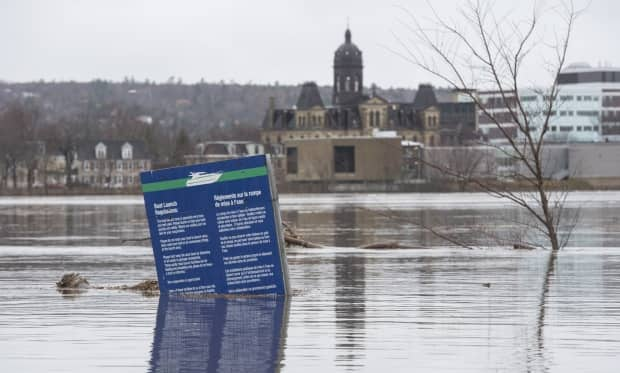After season that went 'almost as well as you can hope', province ends flood forecasting

The threat of flooding along the St. John River caused by melting snow and ice is over for the season, says the provincial government.
On Monday, the province announced it was ending its River Watch program, which offers daily forecasts of the water levels along the St. John River, which is prone to breaking its banks every spring.
"A number of factors go into [ending River Watch] but the big one is really how much snow there is [on the ground] and this late in the season, if there is any ice left [in the St. John River]," said Geoffrey Downey, spokesperson for the New Brunswick Emergency Measures Organization, which participates in the program.
"Right now there is a negligible amount of snow left in the north, and the forecast has been showing the river has been dropping now fairly consistently for about two weeks."
This spring brought very few incidents of flooding resulting in damage to property, he said.
"It went almost as well as you can hope for, especially given what happened in 2018 and 2019," Downey said.
"I think people have a new appreciation for what can happen in the spring."
In 2018 and 2019, water levels in the St. John River rose well above flood stage in several communities, including Fredericton, Maugerville and the Saint John region, resulting in millions of dollars in property damage.
This year, an ice jam along the St. John River at Perth-Andover did have villagers on high alert in late March, resulting in minor flooding on a nearby road and the closure of schools in the village for two days.
Downey said with the end of the program, the province will no longer be offering its five-day forecast of water levels, but the public will still be able to see the real-time water levels through its online portal

 Yahoo Movies
Yahoo Movies 